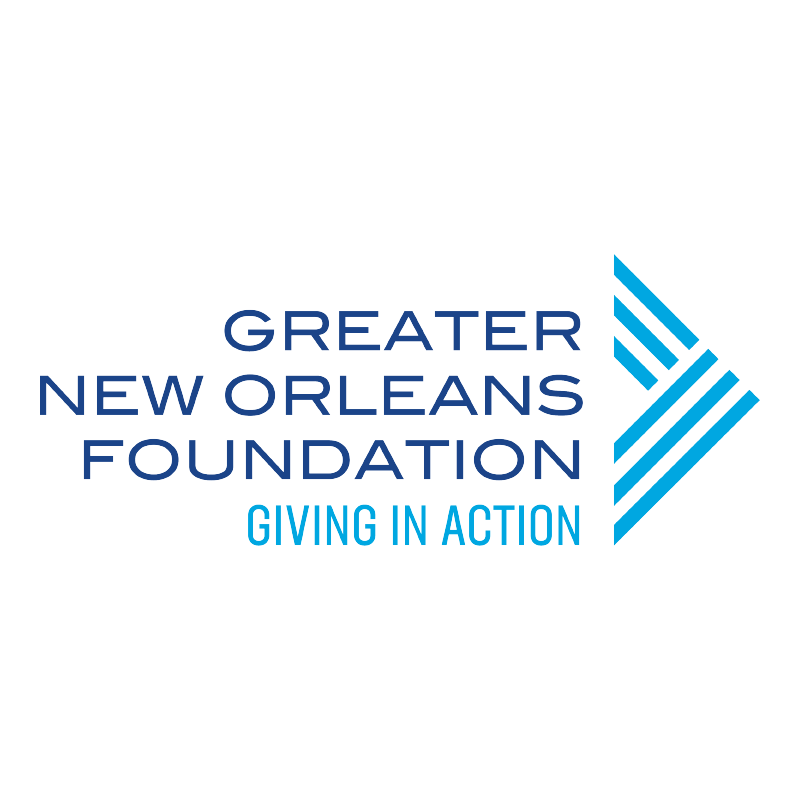This category measures how well our community supports the ability for all citizens to obtain quality jobs, living wages, business ownership, and financial independence through policies and programs that increase workforce readiness, entrepreneurial development, financial education and wealth-building for individuals and families.
What is your impact in this category? Take the Love Your City Assessment and learn how you can maximize your organization’s impact!
DID YOU KNOW?
Despite the economic gains made by the city at large over the past decade, the data illustrates that these gains are not shared equally to people of color.
In 2012, while Black, Latinx, and Asian communities represented 47 percent of the metro New Orleans population, they owned only 36 percent of all firms, and received only 2 percent of all receipts—a share that has remained stagnant both pre and post-Katrina. It should be noted that metro New Orleans area included Jefferson Parish. In Orleans Parish, the Black, Latinx, and Asian communities make up over 60% of the population.
For the African-American community, which is almost 60% of the New Orleans population (Orleans Parish, specifically), unemployment is at 15%.
There is also strong racial inequality in educational achievement, household income and asset ownership.
Likewise, the majority of the city’s households of color rent their homes, and high rent costs leave families without the means to save or build a basic safety net for financial emergencies, let alone build the wealth needed to lay the foundation for upward mobility. Data Source.
Figure 1.1 Median Household Income, Orleans Parish, By Race/Ethnicity (source: prosperitynow.org)
National Trends:
Nationally, tax rates to the rich have declined over the past few decades, allowing predominantly wealthy, white households the ability to expand wealth while low-income households continue to struggle with basic needs. In the United States, the overall tax rate on the richest 400 households last year was only 23 percent, meaning that their combined tax payments equaled less than one-quarter of their total income. This overall rate was 70 percent in 1950 and 47 percent in 1980. You can find a great graphic illustrating this shift here: Data Source.
Members of the Forbes 400 richest households hold more wealth than all U.S. Black Families, combined. Data Source.
Nationally, non-profit leaders of color on average, have smaller budgets to work with and are more likely to report lack of access to and challenges securing financial support from a variety of funding sources than their white counterparts. Data Source. Non-Profit leaders of color also receive less grant money with more strings attached than white non-profit leaders. In fact, amongst organizations focused on improving life outcomes of black men, revenue at organizations with black leaders was 45 percent lower than at groups led by whites. Data Source.
The IRS audits lower-income taxpayers at a higher rate than other taxpayers. Nationally, there has been a “realignment of IRS resources from high-income taxpayers to low- and middle-income Earned Income Tax Credit (EITC) claimants” since 2010 in terms of tax filing scrutiny, and one that “favors auditing EITC taxpayers at higher rates relative to other taxpayers”. In fact, The 10 counties with the highest IRS audit intensity are all found in the Southern Black Belt. The Black Belt is populated mainly by black farmers, many of whom are living below federal poverty lines. Data Source.
Figure 1: Median Household Income, Orleans Parish, By Race/Ethnicity (source: prosperitynow.org)
OUR CHALLENGE
Individuals and organizations must continue to acknowledge that racism is real, exists, and continues to have impacts on every aspect of our society. You must educate yourself constantly on this reality. When you acknowledge that, then it comes as no surprise that consistently, Black and Brown communities experience losses at higher rates across every sector (financial, education, health, employment, housing).
Why? Racism and the lasting effects that this country's legacy of slavery and the forced removal of indigenous people has set up an unequal foundation for people of color to operate in our existing systems (resource share: spend time understanding the deep racist systems in our country: 1619 podcast, an indigenous peoples history of the United States, why are all the black kids sitting together in the cafeteria, skin, the history of white people).
WHAT YOU CAN DO / WHO CAN HELP
Explore your own understanding of racism in our community and challenge your assumptions. One way to learn more about racism and the social concepts of race and class is to read articles that help explain this often invisible force in our systems:
Resources: 1619 podcast, Critical Race Theory, Pedagogy of the Oppressed, An Indigenous Peoples History of the United States, Why Are All the Black Kids Sitting Together in the Cafeteria, and White Fragility.
Review Tema Okun's "The Characteristics of White Supremacy Culture" to assess how and where whiteness might be showing up in your organization’s policies & practices. The readings even include antidotes to adjust your ways of working.
Check for and audit your practices that are reinforcing white supremacy in MBE/DBE vendor selection. It is important to be intentional about not only ensuring that you invest your dollars with diverse and representative businesses but also avoid perpetuating stereotypes of BIPoC (Black/Indigenous/People of Color) as service and entertainment (i.e. exclusively as caterers, performers, landscaping, janitorial, etc.) and white as knowledge and expertise (i.e. consultants, coaches, professional services, etc.).
Assess your organization's current policies and practices: ask yourselves where might seemingly neutral practices be laden with biases that are disproportionately affecting marginalized populations?
WHAT DO POLITICAL LEADERS NEED TO KNOW ABOUT YOUR SECTOR?
Despite the economic gains made by the city at large over the past decade, the data illustrates that these gains are not shared equally to people of color.
In 2012, while Black, Latin, and Asian communities represented 47 percent of the metro New Orleans population, they owned only 36 percent of all firms, and received only 2 percent of all receipts - share that has remained stagnant both pre and post-Katrina. It should be noted that metro New Orleans area included Jefferson Parish. In Orleans Parish, the Black, Latinx, and Asian communities make up over 60% of the population.
For the African-American community, which is almost 60% of the New Orleans population (Orleans Parish, specifically), unemployment is at 15%.
There is also strong racial inequality in educational achievement, household income and asset ownership.
Likewise, the majority of the city’s households of color rent their homes, and high rent costs leave families without the means to save or build a basic safety net for financial emergencies, let alone build the wealth needed to lay the foundation for upward mobility.
WHAT ARE YOUR LOCAL POLICY RECOMMENDATIONS?
Lift the minimum wage & paying an equitable wage.
Improve access to affordable transportation & housing.
WHAT ARE YOUR STATE POLICY RECOMMENDATIONS?
Provide interest-free/low-interest loans to first-time homebuyers who identify as people of color or who live below the poverty level.
WHAT ARE YOUR FEDERAL POLICY RECOMMENDATIONS?
Require the 400 richest households to pay reparations to Black Americans
POWERED BY
Category Leader
Dr. Nicole Caridad Ralston
Pronouns: she/her/hers
Associate Director of Education & Programming
Beloved Community
www.wearebeloved.org
nicole@wearebeloved.org








